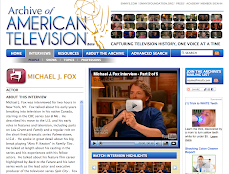
Just released: the much-anticipated The Man From U.N.C.L.E. The Complete Collection DVD set. It's a definitive, 41-disc set that includes the entire run of the series plus over 10 hours of bonus material, including interviews with stars Robert Vaughn and David McCallum, commentaries, home movies from the U.N.C.L.E. set, and rare promos and TV appearances.
This DVD release features footage from the Archive of American Television's interview with series executive producer Norman Felton.
The completely remastered set has all 105 episodes of the show and is packaged in a special collector’s U.N.C.L.E. attaché case.
SPECIAL BONUS FEATURES include:
- Featurette—The Cloak & Swagger Affair: The Untold History of The Man From U.N.C.L.E.
- "Solo"—The Original Color U.N.C.L.E. Pilot
- Bonus Feature: U.N.C.L.E. V.I.P.S.—A Celebration of U.N.C.L.E. Guest Stars!
- Featurette—The Spy-Fi Tour: Archives, Art and Artifacts- U.N.C.L.E. Feature Film—One Spy Too Many
- Interview—Double Agents: The Robert Vaughn and David McCallum Reunion
- The Secret Tapes of Illya Kuryakin: Home Movies from the Set of The Man From U.N.C.L.E.
- Featurette—MGM’s Secret Operations
- Featurette— Cold War, Hot Spies: U.N.C.L.E. and the Cold War
- Featurette— Guns, Gizmos, Gadgets, and Garb
- Featurette— Behind the Wheel: U.N.C.L.E.'s Piranha Fandemonium
- Featurette— The Music From U.N.C.L.E.
- Featurette— The Girls of U.N.C.L.E.
- The Man From U.N.C.L.E. Show Promo - Summer, 1964
- The Man From U.N.C.L.E. Show Promo - 1966-1967
- The Man From U.N.C.L.E. Show Promo - Spring, 1967
- The Man From U.N.C.L.E. Show Promo - "The Test Tube Killer Affair" (9/18/67)
- The Man From U.N.C.L.E. Show Promo - Fall, 1967
- The Man From U.N.C.L.E. Feature Film Trailer - To Trap A Spy (First U.N.C.L.E. movie - - released overseas, 1964; released in the U.S., 1966
- The Man From U.N.C.L.E. Feature Film Trailer - The Spy With My Face (Second U.N.C.L.E. movie - released overseas, 1965; released in the U.S., 1966
- The Man From U.N.C.L.E. Feature Film Trailer - One Spy Too Many (Third U.N.C.L.E. movie - released overseas and in the U.S., 1966)
- The Man From U.N.C.L.E. Feature Film Trailer - One of Our Spies is Missing (Fourth U.N.C.L.E. movie - released overseas, 1966)
- Interview: Dean Hargrove - Writer, The Man From U.N.C.L.E.
- Interview: David McCallum - Illya Kuryakin
- Interview: Richard Donner - Director, The Man From U.N.C.L.E.
- Interview: George Lehr - Assistant Producer, The Man From U.N.C.L.E.
- Interview: Joseph Sargent - Director, The Man From U.N.C.L.E.
- Interview: Robert Vaughn - Napoleon Solo
- The Golden Globe Awards for 1965, aired live on The Andy Williams Show, 1/31/66 (NBC - Winner, Best TV Show)
- 1965 Emmy Broadcast, 9/12/65 (Robert Vaughn & David McCallum, Presenters)
- David McCallum on The Andy Williams Show, 9/20/65
- Tom & Jerry Cartoon - "The Mouse From H.U.N.G.E.R." - MGM, 1967
- Behind the Scenes: Designs and Blueprints From the Set of U.N.C.L.E
- Hidden Camera: An U.N.C.L.E. Photo Gallery
- Classified Files: Network and Studio Documents Image Gallery
- For Collectors Only: U.N.C.L.E. Memorabilia Image Gallery
- Top Secret: U.N.C.L.E. Motion Picture Advertising and Publicity Image Gallery










